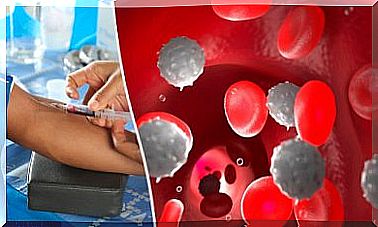Salmonella: Symptoms Of Its Poisoning
Salmonellosis can present with symptoms such as vomiting, headache, diarrhea or chills. It is very important to take into account certain hygienic aspects to avoid it.

The Salmonella is a bacterial genus that causes the disease called salmonellosis or Salmonella. This poisoning occurs through the intake of contaminated food.
The natural habitat of these bacteria is the intestines of animals and humans. They are also found in feces, so poor hygiene could prove fatal.
Salmonella and cholera: common parameters
Over the past centuries, multiple bacterial infections have become the protagonists of some important chapters in the history of medicine.
One of the best known, cholera, produced by the bacterium Vibrio cholerae , became infamous at the end of the 19th century, due to the number of infections in Europe, Africa and Asia.
However, this disease could be eradicated (almost entirely) thanks to the discovery of its route of spread: water contaminated with fecal matter. From that moment on, prior food hygiene became practically an obligation.

The case of salmonella, unlike that of cholera, is much less harmful and has a previous incubation period. However, that does not mean that it is not a dangerous infection or that it does not involve any kind of discomfort.
Salmonella contagion and symptoms
Contagion can occur through direct contact or through cross contamination during food handling. This can happen when handling cooked food or washed with contaminated raw food.
The most common form of transmission is through those of animal origin . They can be chicken, eggs, beef, or even milk. It is also important to pay special attention to its raw derivatives: mayonnaise, cheeses, ice cream and creams.
Likewise, you have to be attentive to pets, because they can be transmitters. The most prone to this disease are reptiles (for example, turtles) and birds.
The first symptoms usually appear between 12 and 72 hours after infection . According to the National Library of Medicine of the United States, these can be nonspecific: diarrhea, vomiting, intestinal pain, headache and chills, among others. The normal duration is four to seven days.
Generally, people do not usually give importance to the symptoms, because it seems that of a gastroenteritis. However, if the symptoms persist after a week, it is advisable to see a doctor.
Keys to avoid salmonella infection
1. Maintain good hygiene
According to this study carried out by the Pontifical Catholic University of Chile, hygiene is practically the most important measure that can be applied on a daily basis.
Hands should be washed with soap and warm water before and after handling food, changing a diaper, or touching a pet.
Cookware, tables, and tables should be scrubbed after each food is prepared. If possible, paper or disposable towels can be used to clean the table.
2. Do not mix food

It is important to separate raw poultry, fish and meat from other foods, both in the supermarket cart and in the refrigerator. If possible, buy different colored plastic cutting boards. Use one for raw vegetables and fruits, another for meats, and a last for cooked ones.
Special care must be taken when handling raw foods. Make sure you maintain proper hygiene and wash each food before human consumption.
3. Cook meat and fish well
When cooking, you have to make sure that everything is well cooked. It doesn’t matter what kind of food it is, meat or fish. All types of cooking are valid, the important thing is that it reaches high temperatures. However, the use of the microwave should be avoided, because it does not reach the same level of heat.
In the same way, it is necessary to try not to consume raw egg-based sauces , because if there was some slight oversight in its preparation, it could lead to intoxication.
4. Store everything in the refrigerator as soon as possible

The refrigerator should be kept as clean as possible. You have to wash bottles and plastic dairy containers (you never know what state the hands that touched them were in).
It is recommended that all products are neat and clean. Processed foods must be refrigerated within two hours (one hour, if the ambient temperature is above 32 ° C).
When some food is defrosted, it can be done in the microwave, in cold water or in the refrigerator, but never at room temperature. And if you are going to marinate any type of meat, you have to leave it in the refrigerator.
Does hygiene really have to be so strict?
Salmonellosis infection can be really bothersome. To avoid it, as well as other infections of bacterial origin, this point must be imperative , both at the body level and through consumption foods.
You should never cook without having washed your hands or without having washed each of the foods. Likewise, it is important not to consume, if possible, any type of raw food or that has not gone through a safe decontamination process.









